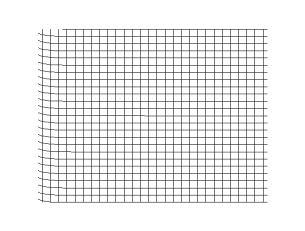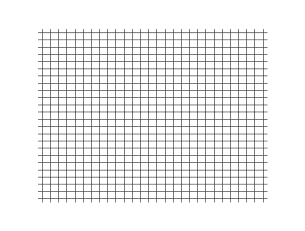|
Fermat's Principle
Fermat's principle, also known as the principle of least time, is the link between geometrical optics, ray optics and physical optics, wave optics. Fermat's principle states that the path taken by a Ray (optics), ray between two given points is the path that can be traveled in the least time. First proposed by the French mathematician Pierre de Fermat in 1662, as a means of explaining the Snell's law, ordinary law of refraction of light (Fig.1), Fermat's principle was initially controversial because it seemed to ascribe knowledge and intent to nature. Not until the 19th century was it understood that nature's ability to test alternative paths is merely a fundamental property of waves. If points ''A'' and ''B'' are given, a wavefront expanding from ''A'' sweeps all possible ray paths radiating from ''A'', whether they pass through ''B'' or not. If the wavefront reaches point ''B'', it sweeps not only the ''ray'' path(s) from ''A'' to ''B'', but also an infinitude of near ... [...More Info...] [...Related Items...] OR: [Wikipedia] [Google] [Baidu] |
Fermat Snellius
Pierre de Fermat (; ; 17 August 1601 – 12 January 1665) was a French mathematician who is given credit for early developments that led to infinitesimal calculus, including his technique of adequality. In particular, he is recognized for his discovery of an original method of finding the greatest and the smallest ordinates of curved lines, which is analogous to that of differential calculus, then unknown, and his research into number theory. He made notable contributions to analytic geometry, probability, and optics. He is best known for his Fermat's principle for light propagation and his Fermat's Last Theorem in number theory, which he described in a note at the margin of a copy of Diophantus' ''Arithmetica''. He was also a lawyer at the ''parlement'' of Toulouse, France. Biography Fermat was born in 1601 in Beaumont-de-Lomagne, France—the late 15th-century mansion where Fermat was born is now a museum. He was from Gascony, where his father, Dominique Fermat, was a wealthy ... [...More Info...] [...Related Items...] OR: [Wikipedia] [Google] [Baidu] |
Equivalence To Huygens' Construction
Equivalence or Equivalent may refer to: Arts and entertainment *Album-equivalent unit, a measurement unit in the music industry *Equivalence class (music) *''Equivalent VIII'', or ''The Bricks'', a minimalist sculpture by Carl Andre *'' Equivalents'', a series of photographs of clouds by Alfred Stieglitz Language *Dynamic and formal equivalence in translation *Equivalence (formal languages) Law *The doctrine of equivalents in patent law *The equivalence principle as if impacts on the direct effect of European Union law Logic *Logical equivalence, where two statements are logically equivalent if they have the same logical content * Material equivalence, a relationship where the truth of either one of the connected statements requires the truth of the other Science and technology Chemistry *Equivalent (chemistry) *Equivalence point *Equivalent weight Computing *Turing equivalence (theory of computation), or Turing completeness *Semantic equivalence in computer metadata Econo ... [...More Info...] [...Related Items...] OR: [Wikipedia] [Google] [Baidu] |
Energy Flux Density
Energy flux is the rate of transfer of energy through a surface. The quantity is defined in two different ways, depending on the context: # Total rate of energy transfer (not per unit area); SI units: W = J⋅s−1. # Specific rate of energy transfer (total normalized per unit area); SI units: W⋅m−2 = J⋅m−2⋅s−1: #* This is a vector quantity, its components being determined in terms of the normal (perpendicular) direction to the surface of measurement. #* This is sometimes called ''energy flux density'', to distinguish it from the first definition. #* Radiative flux, heat flux, and sound energy flux density (also sound intensity)https://www.acoustic-glossary.co.uk/sound-intensity.htm are specific cases of this meaning. See also *Energy flow (ecology) *Flux *Irradiance *Poynting vector *Stress–energy tensor The stress–energy tensor, sometimes called the stress–energy–momentum tensor or the energy–momentum tensor, is a tensor physical quantity that describ ... [...More Info...] [...Related Items...] OR: [Wikipedia] [Google] [Baidu] |
Concave Lens
A lens is a transmissive optical device that focuses or disperses a light beam by means of refraction. A simple lens consists of a single piece of transparent material, while a compound lens consists of several simple lenses (''elements''), usually arranged along a common axis. Lenses are made from materials such as glass or plastic and are ground, polished, or molded to the required shape. A lens can focus light to form an image, unlike a prism, which refracts light without focusing. Devices that similarly focus or disperse waves and radiation other than visible light are also called "lenses", such as microwave lenses, electron lenses, acoustic lenses, or explosive lenses. Lenses are used in various imaging devices such as telescopes, binoculars, and cameras. They are also used as visual aids in glasses to correct defects of vision such as myopia and hypermetropia. History The word ''lens'' comes from , the Latin name of the lentil (a seed of a lentil plant), because ... [...More Info...] [...Related Items...] OR: [Wikipedia] [Google] [Baidu] |
Opticks
''Opticks: or, A Treatise of the Reflexions, Refractions, Inflexions and Colours of Light'' is a collection of three books by Isaac Newton that was published in English language, English in 1704 (a scholarly Latin translation appeared in 1706). (''Opticks'' was originally published in 1704). The treatise analyzes the fundamental nature of light by means of the refraction of light with prisms and lenses, the diffraction of light by closely spaced sheets of glass, and the behaviour of color mixtures with spectral lights or pigment powders. ''Opticks'' was Newton's second major work on physical science and it is considered one of the three major works on optics during the Scientific Revolution (alongside Johannes Kepler's ''Astronomiae Pars Optica'' and Christiaan Huygens' ''Treatise on Light''). Overview The publication of ''Opticks'' represented a major contribution to science, different from but in some ways rivalling the ''Philosophiae Naturalis Principia Mathematica, Principia ... [...More Info...] [...Related Items...] OR: [Wikipedia] [Google] [Baidu] |
Transverse Wave
In physics, a transverse wave is a wave that oscillates perpendicularly to the direction of the wave's advance. In contrast, a longitudinal wave travels in the direction of its oscillations. All waves move energy from place to place without transporting the matter in the transmission medium if there is one. Electromagnetic waves are transverse without requiring a medium. The designation “transverse” indicates the direction of the wave is perpendicular to the displacement of the particles of the medium through which it passes, or in the case of EM waves, the oscillation is perpendicular to the direction of the wave. A simple example is given by the waves that can be created on a horizontal length of string by anchoring one end and moving the other end up and down. Another example is the waves that are created on the membrane of a drum. The waves propagate in directions that are parallel to the membrane plane, but each point in the membrane itself gets displaced up and dow ... [...More Info...] [...Related Items...] OR: [Wikipedia] [Google] [Baidu] |
Longitudinal Wave
Longitudinal waves are waves which oscillate in the direction which is parallel to the direction in which the wave travels and displacement of the medium is in the same (or opposite) direction of the wave propagation. Mechanical longitudinal waves are also called ''compressional'' or compression waves, because they produce compression and rarefaction when travelling through a medium, and pressure waves, because they produce increases and decreases in pressure. A wave along the length of a stretched Slinky toy, where the distance between coils increases and decreases, is a good visualization. Real-world examples include sound waves (vibrations in pressure, a particle of displacement, and particle velocity propagated in an elastic medium) and seismic P waves (created by earthquakes and explosions). The other main type of wave is the transverse wave, in which the displacements of the medium are at right angles to the direction of propagation. Transverse waves, for instance, ... [...More Info...] [...Related Items...] OR: [Wikipedia] [Google] [Baidu] |
Euclidean Vector
In mathematics, physics, and engineering, a Euclidean vector or simply a vector (sometimes called a geometric vector or spatial vector) is a geometric object that has magnitude (or length) and direction. Euclidean vectors can be added and scaled to form a vector space. A '' vector quantity'' is a vector-valued physical quantity, including units of measurement and possibly a support, formulated as a '' directed line segment''. A vector is frequently depicted graphically as an arrow connecting an ''initial point'' ''A'' with a ''terminal point'' ''B'', and denoted by \stackrel \longrightarrow. A vector is what is needed to "carry" the point ''A'' to the point ''B''; the Latin word means 'carrier'. It was first used by 18th century astronomers investigating planetary revolution around the Sun. The magnitude of the vector is the distance between the two points, and the direction refers to the direction of displacement from ''A'' to ''B''. Many algebraic operations on real numbe ... [...More Info...] [...Related Items...] OR: [Wikipedia] [Google] [Baidu] |
Scalar (physics)
Scalar quantities or simply scalars are physical quantities that can be described by a single pure number (a ''scalar'', typically a real number), accompanied by a unit of measurement, as in "10cm" (ten centimeters). Examples of scalar are length, mass, charge, volume, and time. Scalars may represent the magnitude of physical quantities, such as speed is to velocity. Scalars do not represent a direction. Scalars are unaffected by changes to a vector space basis (i.e., a coordinate rotation) but may be affected by translations (as in relative speed). A change of a vector space basis changes the description of a vector in terms of the basis used but does not change the vector itself, while a scalar has nothing to do with this change. In classical physics, like Newtonian mechanics, rotations and reflections preserve scalars, while in relativity, Lorentz transformations or space-time translations preserve scalars. The term "scalar" has origin in the multiplication o ... [...More Info...] [...Related Items...] OR: [Wikipedia] [Google] [Baidu] |
Action At A Distance
Action at a distance is the concept in physics that an object's motion (physics), motion can be affected by another object without the two being in Contact mechanics, physical contact; that is, it is the concept of the non-local interaction of objects that are separated in space. Coulomb's law and Newton's law of universal gravitation are based on action at a distance. Historically, action at a distance was the earliest scientific model for gravity and electricity and it continues to be useful in many practical cases. In the 19th and 20th centuries, field models arose to explain these phenomena with more precision. The discovery of Electron, electrons and of special relativity led to new action at a distance models providing alternative to field theories. Under our modern understanding, the four fundamental interactions (gravity, electromagnetism, the strong interaction and the weak interaction) in all of physics are not described by action at a distance. Categories of action I ... [...More Info...] [...Related Items...] OR: [Wikipedia] [Google] [Baidu] |
Isotropy
In physics and geometry, isotropy () is uniformity in all orientations. Precise definitions depend on the subject area. Exceptions, or inequalities, are frequently indicated by the prefix ' or ', hence ''anisotropy''. ''Anisotropy'' is also used to describe situations where properties vary systematically, dependent on direction. Isotropic radiation has the same intensity regardless of the direction of measurement, and an isotropic field exerts the same action regardless of how the test particle is oriented. Mathematics Within mathematics, ''isotropy'' has a few different meanings: ; Isotropic manifolds: A manifold is isotropic if the geometry on the manifold is the same regardless of direction. A similar concept is homogeneity. ; Isotropic quadratic form: A quadratic form ''q'' is said to be isotropic if there is a non-zero vector ''v'' such that ; such a ''v'' is an isotropic vector or null vector. In complex geometry, a line through the origin in the direction of an is ... [...More Info...] [...Related Items...] OR: [Wikipedia] [Google] [Baidu] |
Transmission Medium
A transmission medium is a system or substance that can mediate the propagation of signals for the purposes of telecommunication. Signals are typically imposed on a wave of some kind suitable for the chosen medium. For example, data can modulate sound, and a transmission medium for sounds may be air, but solids and liquids may also act as the transmission medium. Vacuum or air constitutes a good transmission medium for electromagnetic waves such as light and radio waves. While a material substance is not required for electromagnetic waves to propagate, such waves are usually affected by the transmission medium they pass through, for instance, by absorption or reflection or refraction at the interfaces between media. Technical devices can therefore be employed to transmit or guide waves. Thus, an optical fiber or a copper cable is used as transmission media. Electromagnetic radiation can be transmitted through an optical medium, such as optical fiber, or through twisted ... [...More Info...] [...Related Items...] OR: [Wikipedia] [Google] [Baidu] |




